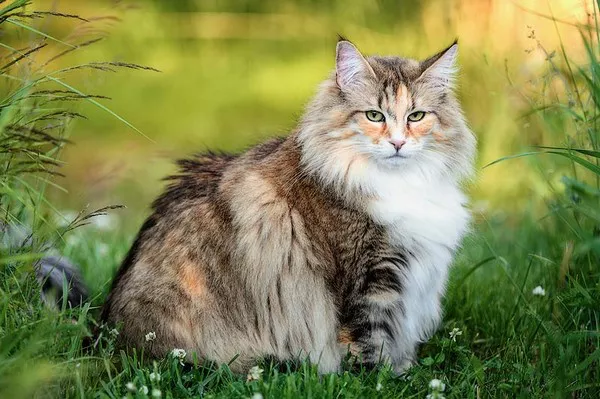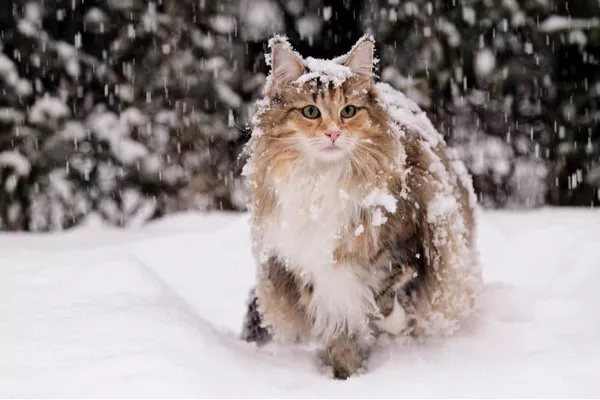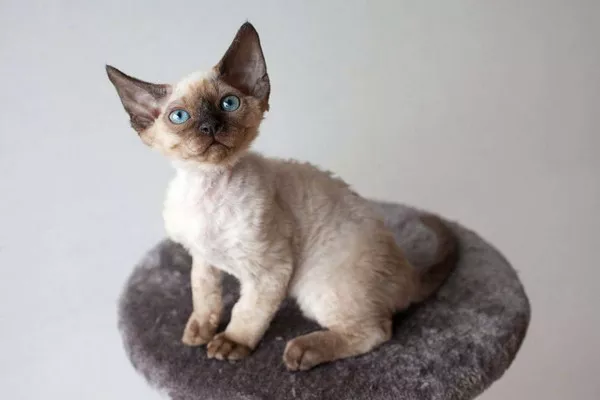Norwegian Forest Cats, with their majestic appearance and enchanting presence, have captured the hearts of cat enthusiasts around the world. Known for their robust build, luxurious fur, and striking features, Norwegian Forest Cats possess a charm and elegance that sets them apart from other breeds. However, beyond their physical attributes, questions often arise about their vocalizations and the sounds they make. In this article, we delve into the world of Norwegian Forest Cats, unraveling the mystery behind their vocalizations and exploring the range of sounds they produce.
Understanding Norwegian Forest Cats
Before delving into their vocalizations, it’s essential to understand the origins and characteristics of Norwegian Forest Cats.
Ancient Heritage: Norwegian Forest Cats, or “Wegies” as they are affectionately called, have a rich history dating back thousands of years. Originating in Norway, these cats were prized for their ability to thrive in harsh climates and their role as skilled hunters and companions to the Vikings.
Physical Characteristics: Norwegian Forest Cats are known for their large, muscular bodies, tufted ears, bushy tails, and dense, water-resistant fur. Their thick, double-layered coats provide insulation against cold temperatures and make them well-suited to their native environment.
Exploring Vocalizations
While Norwegian Forest Cats are not as vocal as some other breeds, they are known to produce a range of sounds that communicate their needs, desires, and emotions.
Purring
Purring is one of the most common vocalizations observed in Norwegian Forest Cats. Like many other cat breeds, Norwegian Forest Cats purr to express contentment, relaxation, and pleasure. The rhythmic vibrations produced by purring are soothing to both the cat and its human companions and can signify a sense of security and well-being.
Chirping
Norwegian Forest Cats are also known to produce chirping sounds, which are often described as a cross between a meow and a trill. Chirping is thought to be an expression of excitement, anticipation, or curiosity. Cats may chirp in response to the sight of birds or prey, as well as during play or interactive activities with their owners.
Meowing
While Norwegian Forest Cats are generally not as vocal as some other breeds, they may occasionally meow to communicate with their human companions. Meowing can serve various purposes, including seeking attention, expressing hunger or thirst, or indicating discomfort or distress. Each cat has its own unique meow, which may vary in pitch, tone, and intensity.
Yowling
Yowling is a more intense vocalization often associated with mating behavior or territorial disputes. Male Norwegian Forest Cats may yowl to attract female mates during the breeding season, while females may yowl in response to the presence of competing males. Yowling may also occur in response to changes in the cat’s environment or routine, such as moving to a new home or experiencing separation from its owner.
Factors Influencing Vocalizations
Several factors can influence the vocalizations of Norwegian Forest Cats, including genetics, personality, and environmental stimuli.
Genetics: The vocalizations exhibited by Norwegian Forest Cats may be influenced by their genetic heritage and breed characteristics. While some cats are naturally more vocal than others, individual variations in temperament and personality can also play a role in determining the frequency and intensity of vocalizations.
Personality: Like humans, cats have distinct personalities and preferences that shape their behavior and vocalizations. Some Norwegian Forest Cats may be more vocal and outgoing, while others may be quieter and more reserved. Understanding your cat’s personality can help you interpret its vocalizations and respond appropriately to its needs.
Environmental Stimuli: Environmental factors, such as changes in routine, new experiences, or the presence of other animals, can trigger vocalizations in Norwegian Forest Cats. Cats may meow, chirp, or yowl in response to stimuli in their environment, signaling their emotions or desires to their human companions.
Personal Experiences and Testimonials
To gain further insight into the vocalizations of Norwegian Forest Cats, it can be helpful to hear from owners who have firsthand experience with the breed.
“My Norwegian Forest Cat, Loki, is not very vocal compared to other breeds, but he does have a unique chirping sound that he makes when he’s excited or curious. It’s like he’s trying to communicate with me in his own special way.” – Emily, Norwegian Forest Cat Owner
“My Norwegian Forest Cat, Freya, is quite chatty and will meow to get my attention when she wants food or playtime. She also chirps and trills when she’s exploring the house or watching birds outside the window. It’s fascinating to hear the range of sounds she can produce.” – Mark, Norwegian Forest Cat Owner
Conclusion
In conclusion, Norwegian Forest Cats are known for their unique vocalizations, which encompass a range of sounds from purring and chirping to meowing and yowling. While not as vocal as some other breeds, Norwegian Forest Cats communicate with their human companions through a variety of vocal cues that express their needs, desires, and emotions.
By understanding the factors that influence their vocalizations, including genetics, personality, and environmental stimuli, cat owners can better interpret and respond to the vocalizations of their Norwegian Forest Cats. Whether chirping with excitement, meowing for attention, or purring in contentment, these majestic cats continue to enchant and captivate cat lovers with their expressive voices and charming personalities.


























